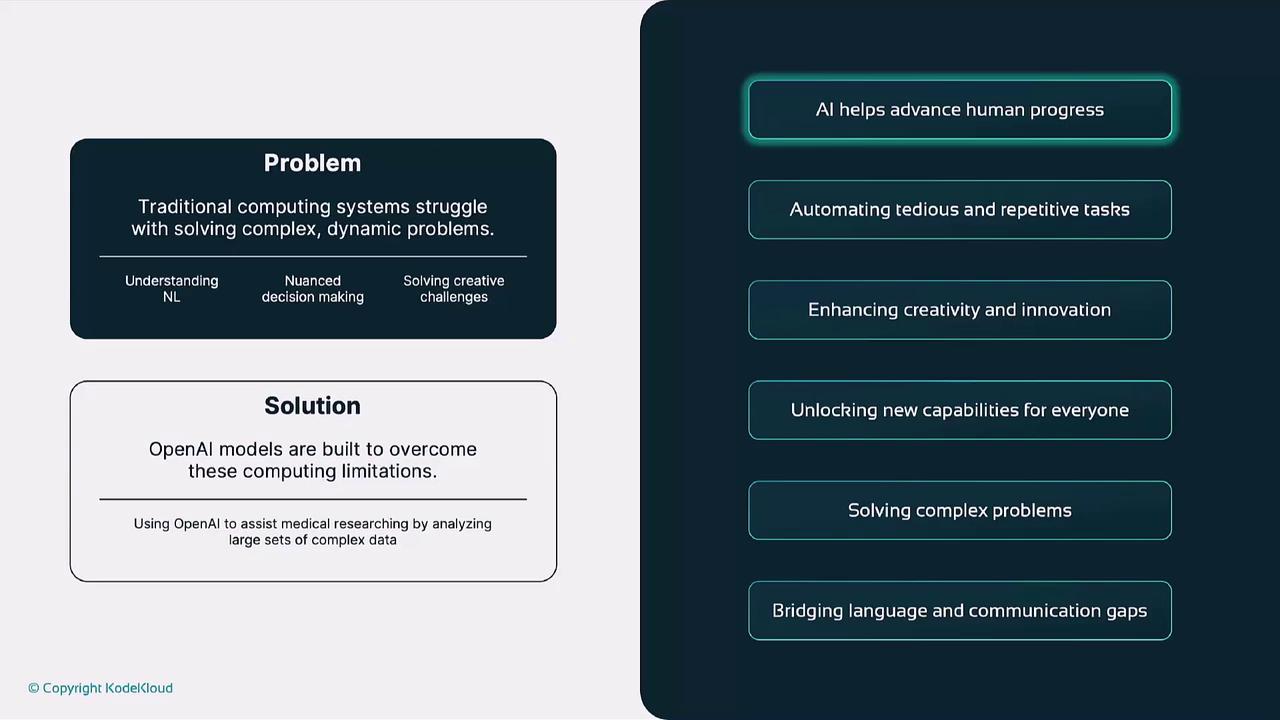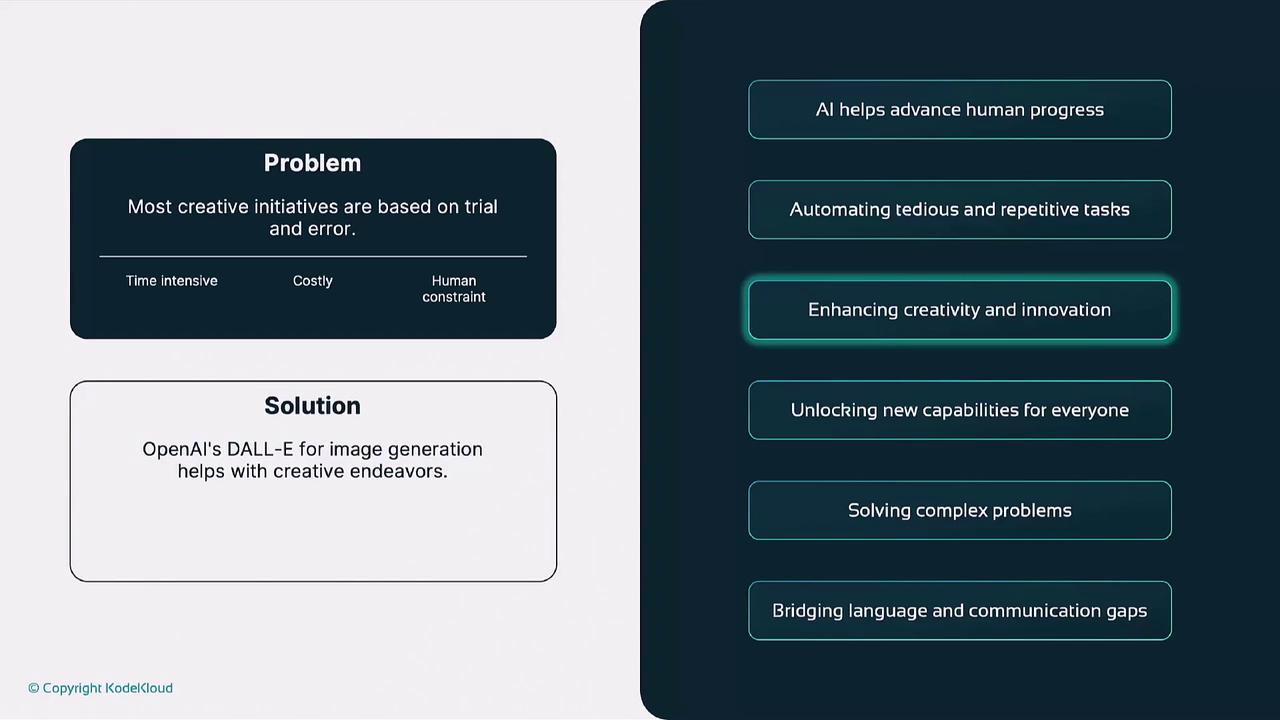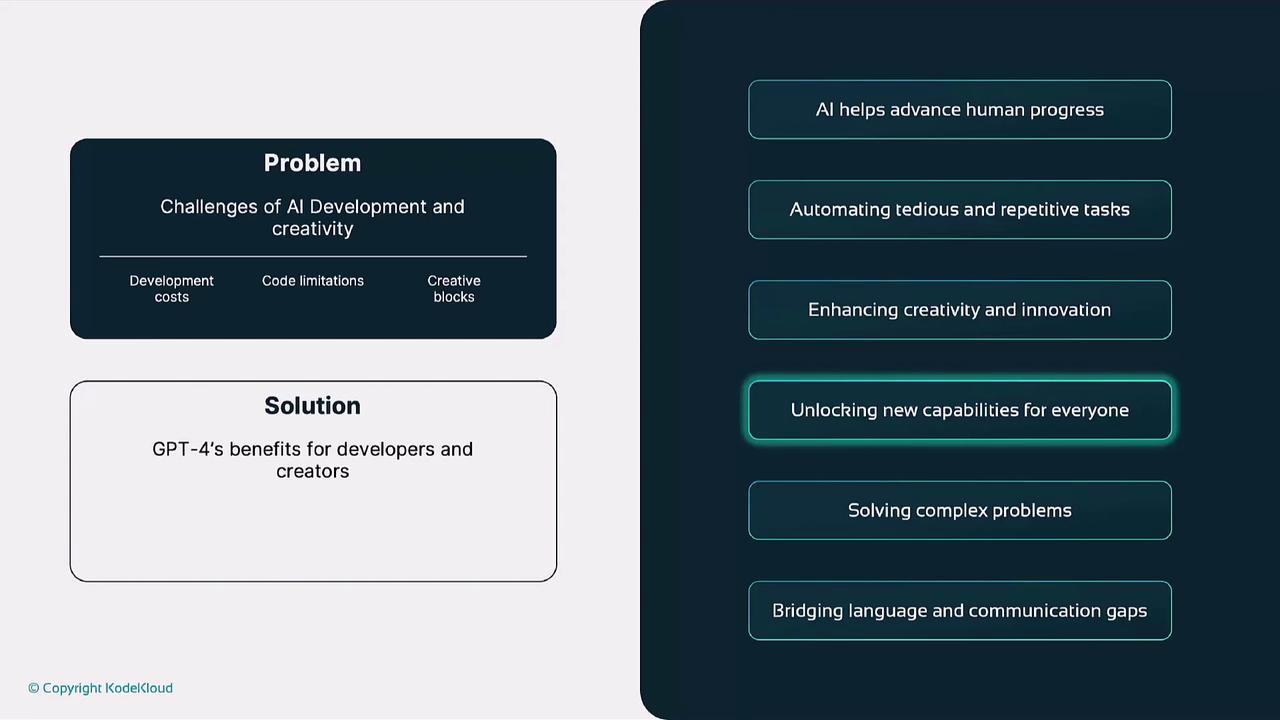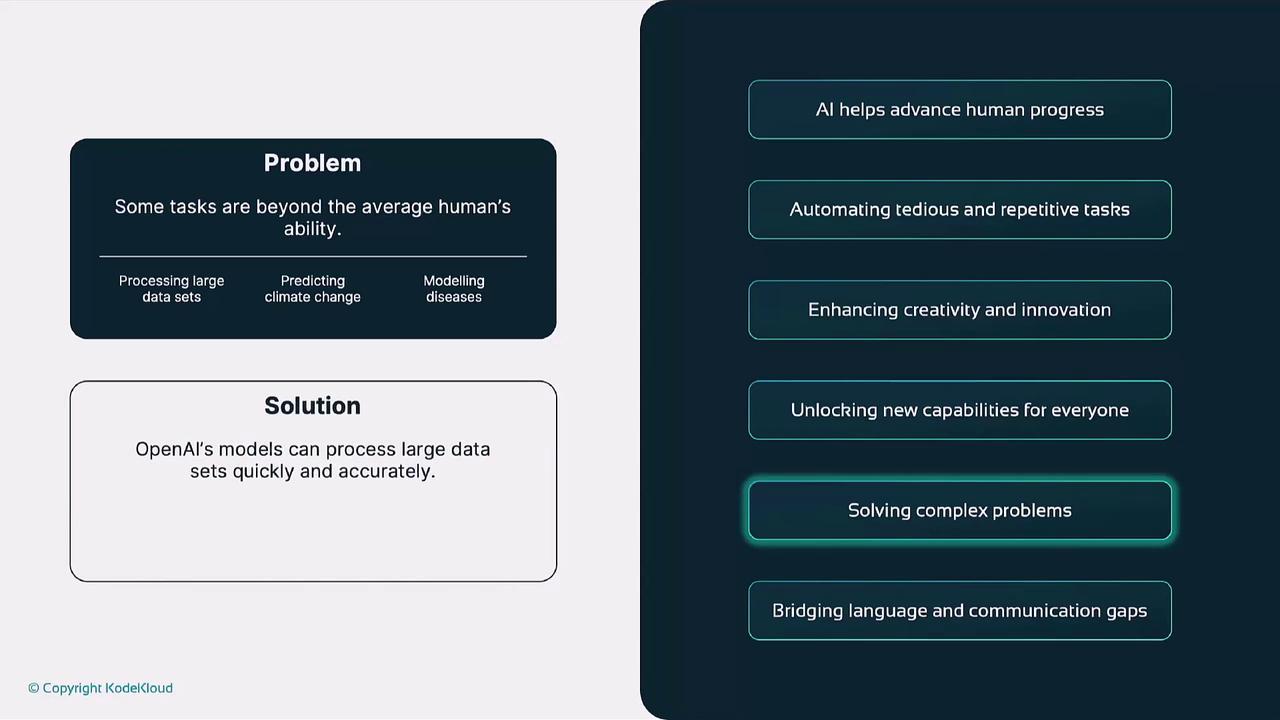Introduction to OpenAI
Pre Requisites
Why We Need OpenAI
OpenAI’s advanced artificial intelligence unlocks powerful new capabilities, from accelerating research to automating everyday tasks. In this article, we’ll dive into the six main reasons organizations and individuals rely on OpenAI to stay competitive, creative, and efficient.
| Benefit | Impact | Example |
|---|---|---|
| Advances Human Progress | Solves ambiguous, real-world problems | AI-driven drug discovery in pharmaceuticals |
| Automates Tedious Tasks | Frees teams for strategic work | GPT-4–powered customer support bots |
| Enhances Creativity and Innovation | Accelerates ideation and prototyping | DALL·E image generation for marketing |
| Unlocks New Capabilities for Developers | Reduces time-to-market for AI features | Instant NLP in chatbots using GPT-4 API |
| Solves Complex Problems at Scale | Processes massive datasets efficiently | Climate modeling and supply-chain optimization |
| Bridges Language and Communication Gaps | Provides personalized learning | AI-powered language tutoring apps |
1. Advances Human Progress
Traditional software follows static rules, making it difficult to tackle tasks involving uncertainty, nuance, or creativity. OpenAI’s models, however, excel at:
- Natural language understanding
- Complex decision-making
- Creative problem solving

For instance, in medicine, GPT-4 can analyze thousands of research papers to spot novel drug candidates—shortening research cycles and accelerating breakthroughs in oncology or neurology.
2. Automates Tedious and Repetitive Tasks
Repetitive chores like data entry, routine customer support, or basic content drafting drain time and resources. OpenAI automates these processes to let teams focus on innovation:

With GPT-4, you can:
- Instantly respond to FAQs
- Generate first-draft reports and summaries
- Automate blog post outlines
Note
Automating routine tasks not only boosts productivity but also reduces human error, ensuring consistent output quality.
Companies like Shopify integrate AI chatbots that handle thousands of inquiries daily—improving response times and customer satisfaction without expanding support teams.
3. Enhances Creativity and Innovation
Creative blocks and limited resources often slow design, writing, and marketing efforts. OpenAI’s tools help you ideate, prototype, and iterate faster:

- GPT-4 generates story prompts, dialogue, or full drafts
- DALL·E produces unique visuals from plain-text descriptions
For example, a marketing agency can rapidly generate multiple ad copy variations and concept images—driving faster campaign turnarounds and more A/B testing options.
4. Unlocks New Capabilities for Everyone
Building robust AI from scratch demands specialized talent and infrastructure. OpenAI’s pre-trained models let developers embed advanced features instantly:

Key integrations include:
- Natural language processing (NLP)
- Code generation and review
- Automated reasoning and summarization
A chatbot built with GPT-4 handles context-aware conversations out of the box—no complex NLP pipelines required.
5. Solves Complex Problems Beyond Human Capability
Modeling systems like climate change, epidemiology, or large-scale logistics involves massive data and subtle patterns. OpenAI rises to the challenge:

Use cases include:
- Predicting compound interactions in drug discovery
- Simulating environmental changes for climate research
- Optimizing supply-chain routes in real time
These capabilities help scientists and enterprises make high-confidence decisions faster than ever before.
6. Bridges Language and Communication Gaps
One-size-fits-all teaching and translation tools often fall short in personalized learning. OpenAI powers adaptive, interactive language experiences:
OpenAI–driven language apps can:
- Tailor vocabulary exercises to individual progress
- Offer real-time grammar and pronunciation feedback
- Translate conversations with near-human fluency
Warning
Always review AI-generated content for accuracy and cultural sensitivity—especially when translating or teaching critical concepts.
By customizing each learner’s journey, AI-driven platforms foster engagement and improve outcomes in global classrooms and remote training environments.
References
Watch Video
Watch video content